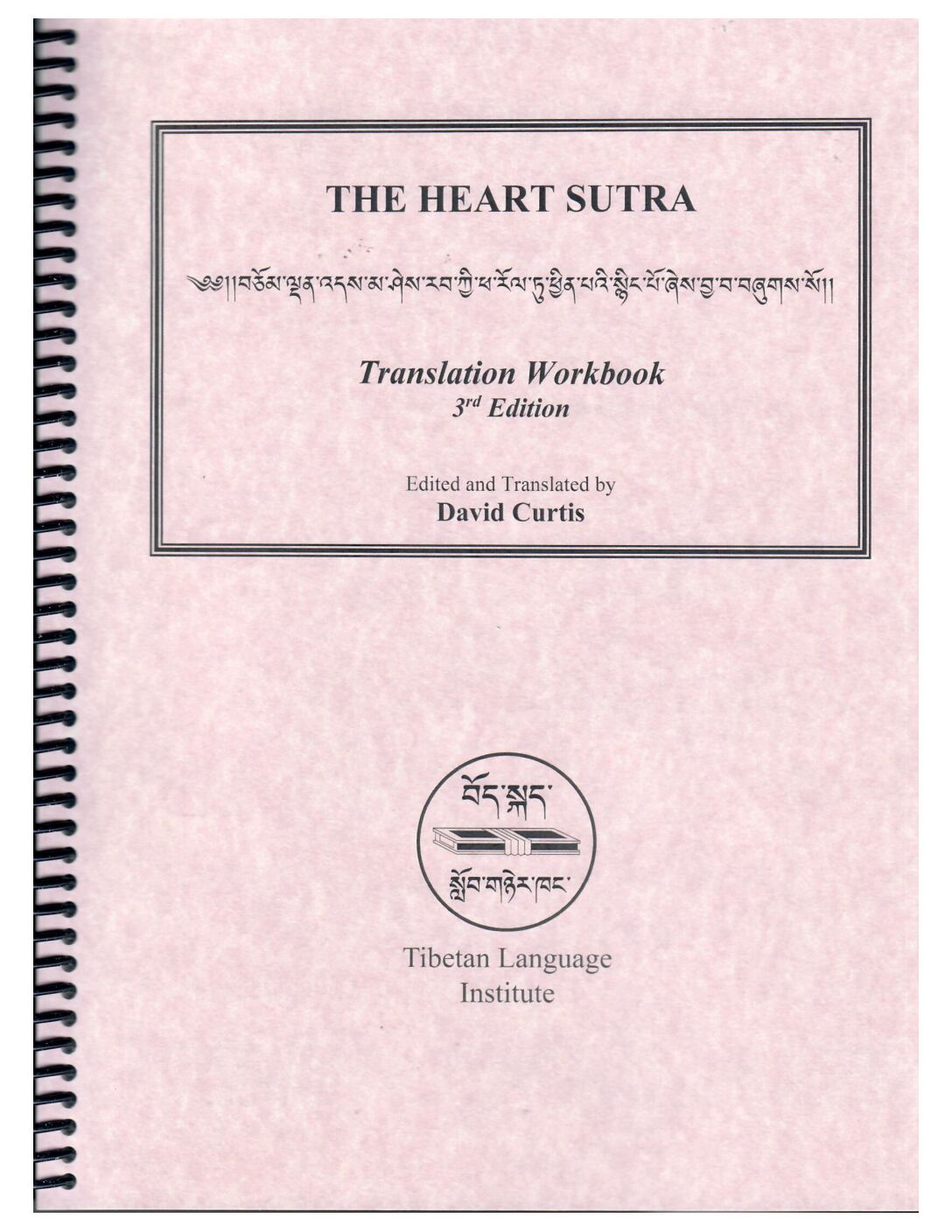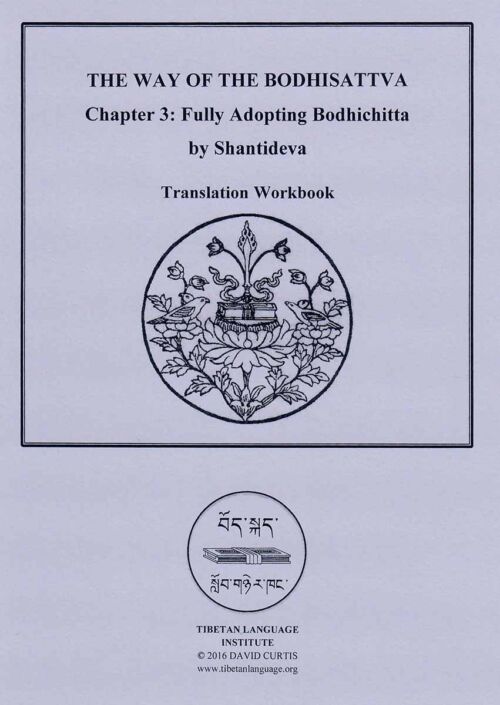-
Out of stock
 Continues Craig Preston's ground-breaking series of self-study materials designed for students learning to read Classical Tibetan on their own. This book serves a dual purpose: the student learns both grammar and philosophy at the same time.
Continues Craig Preston's ground-breaking series of self-study materials designed for students learning to read Classical Tibetan on their own. This book serves a dual purpose: the student learns both grammar and philosophy at the same time. -
Out of stock
 A complete language course built around the exposition of a famous Tibetan text on the Summary of the General Path to Buddhahood written at the beginning of the 15th century.
A complete language course built around the exposition of a famous Tibetan text on the Summary of the General Path to Buddhahood written at the beginning of the 15th century. -
 Lama David Curtis designed this Introduction to Tibetan Language, Level I, 2nd Edition, with Glossary: A People’s Guide to Classical Tibetan, The Sacred Language of Tibetan Buddhism as part of a complete course which we strongly recommend for beginners (see the Beginners/Level I Package). Used with great success by Dharma students from all over the world, this workbook represents a distillation of numerous resources, refined through practical teaching experience to meet the needs of beginning Tibetan students.
Lama David Curtis designed this Introduction to Tibetan Language, Level I, 2nd Edition, with Glossary: A People’s Guide to Classical Tibetan, The Sacred Language of Tibetan Buddhism as part of a complete course which we strongly recommend for beginners (see the Beginners/Level I Package). Used with great success by Dharma students from all over the world, this workbook represents a distillation of numerous resources, refined through practical teaching experience to meet the needs of beginning Tibetan students.Amanda V, LV 1 student says: Learning the Tibetan alphabet and the seven elements [of learning to read a Tibetan syllable] has made my Dharma practice a rich experience. Now when I read Sadhanas with the English translation, my pronunciation has improved. It’s fun--I want to continue learning Tibetan.
-
 Designed as part of a complete course for the beginning/intermediate learner (Level II Package).
Designed as part of a complete course for the beginning/intermediate learner (Level II Package). -
 The manual is divided into 5 sections: grammar, vocabulary, a Tibetan-to-English glossary, an English-to-Tibetan glossary, and a homework section. Designed as part of a complete course for the beginning/intermediate learner. (Level III Package)
The manual is divided into 5 sections: grammar, vocabulary, a Tibetan-to-English glossary, an English-to-Tibetan glossary, and a homework section. Designed as part of a complete course for the beginning/intermediate learner. (Level III Package) -
 Our text is P'a Dampa's final teaching to his students in Ding Ri. Revered for nearly a thousand years by lamas and practitioners, his teaching contains practical and profound advice that still speaks to us today. The workbook contains the English translation, workbook pages for the student, an interlinear translation, and reading practice pages.
Our text is P'a Dampa's final teaching to his students in Ding Ri. Revered for nearly a thousand years by lamas and practitioners, his teaching contains practical and profound advice that still speaks to us today. The workbook contains the English translation, workbook pages for the student, an interlinear translation, and reading practice pages. -
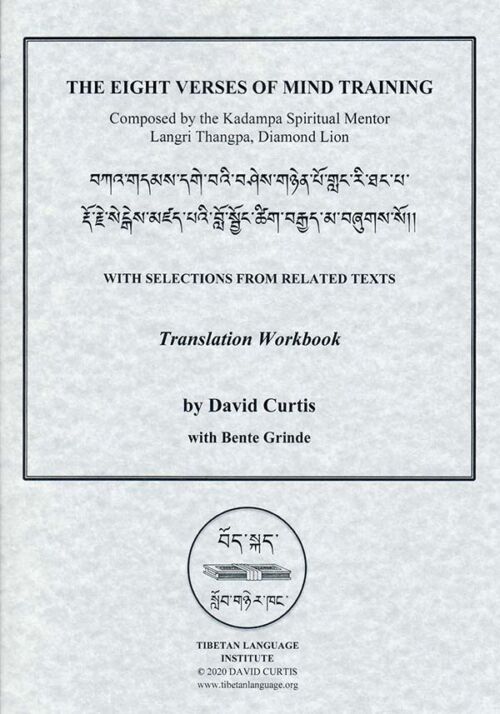 Become a better reader of Tibetan and engage more deeply with authentic Dharma teachings. Although written a thousand years ago by Kadampa spiritual mentor Geshe Langri Thangpa, the 8 Verses remains a brilliant lojong teaching that speaks right to our hearts in these challenging times. This a teaching that is still enthusiastically embraced by all lineages of Tibetan Buddhism. It has been taught by the 14th Dalai Lama, Lama Zopa Rinpoche, and most recently by Anam Thubten Rinpoche. Our workbook also has additional 4-line verses from various texts having to do with compassionate development of bodhicitta (the Heart of Awakening): a prayer from the Green Tara Sadhana, a verse from chapter 9 of Shantideva’s Engaging in the Conduct of the Bodhisattva, and a prayer from the Chenrezig Sadhana.
Become a better reader of Tibetan and engage more deeply with authentic Dharma teachings. Although written a thousand years ago by Kadampa spiritual mentor Geshe Langri Thangpa, the 8 Verses remains a brilliant lojong teaching that speaks right to our hearts in these challenging times. This a teaching that is still enthusiastically embraced by all lineages of Tibetan Buddhism. It has been taught by the 14th Dalai Lama, Lama Zopa Rinpoche, and most recently by Anam Thubten Rinpoche. Our workbook also has additional 4-line verses from various texts having to do with compassionate development of bodhicitta (the Heart of Awakening): a prayer from the Green Tara Sadhana, a verse from chapter 9 of Shantideva’s Engaging in the Conduct of the Bodhisattva, and a prayer from the Chenrezig Sadhana. -
 Become a better reader of Tibetan and engage more deeply with authentic Dharma teachings. The Three Princpal Aspects of the Path by Je Tsongkhapa (1357-1419) is a concise and beautifully crafted text, rich in Buddhist philosophical meaning. In just 14 verses, it offers a brief, highly-polished summary of the path (lamrim) to enlightenment. The Three Principal Aspects of the Path can be regarded as a highly condensed version of the Lamrim Chenmo, Tsongkhapa's magnum opus. Despite being over 600 years old, it is still an important text in the Tibetan Buddhist tradition.
Become a better reader of Tibetan and engage more deeply with authentic Dharma teachings. The Three Princpal Aspects of the Path by Je Tsongkhapa (1357-1419) is a concise and beautifully crafted text, rich in Buddhist philosophical meaning. In just 14 verses, it offers a brief, highly-polished summary of the path (lamrim) to enlightenment. The Three Principal Aspects of the Path can be regarded as a highly condensed version of the Lamrim Chenmo, Tsongkhapa's magnum opus. Despite being over 600 years old, it is still an important text in the Tibetan Buddhist tradition. -
Out of stock
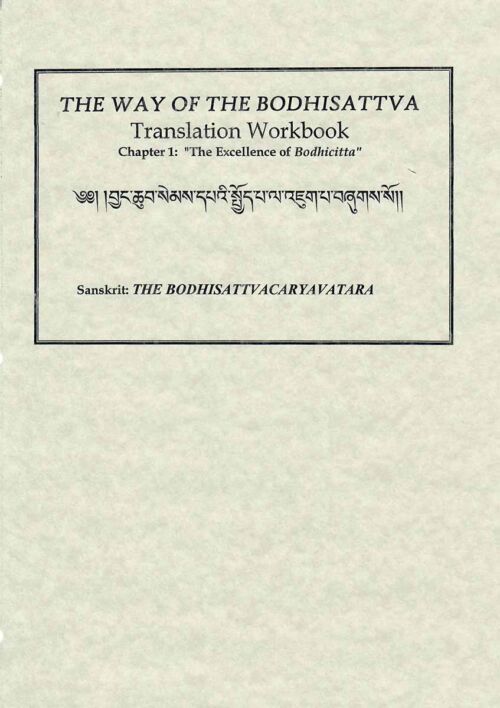 Composed in the 8th century, this text becomes richer and richer with each reading--it combines those rare qualities of scholastic precision, spiritual depth, and poetical beauty.
Composed in the 8th century, this text becomes richer and richer with each reading--it combines those rare qualities of scholastic precision, spiritual depth, and poetical beauty. -

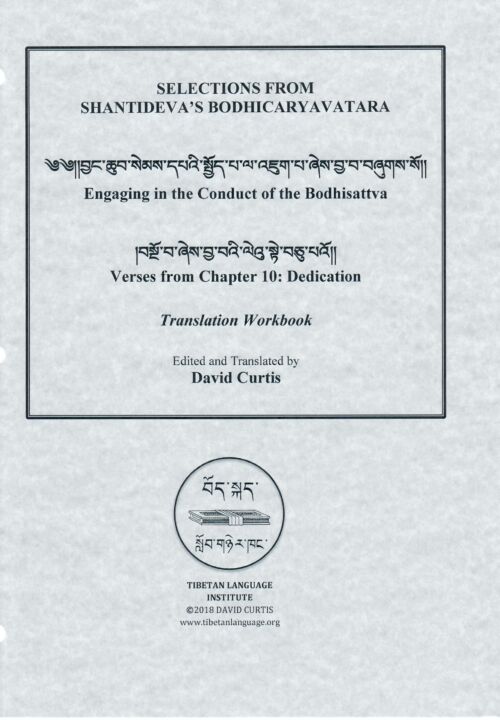 This Chapter 10 translation workbook includes:
This Chapter 10 translation workbook includes:- 4 Verses of Tibetan per page, with English translation on facing page
- Reading practice pages
- Annotated Tibetan-English Glossary
- Appendices: Abbreviations; Verb Classes; Table of Contents for the Tibetan text of the Divine Tree Grammar Poem.


